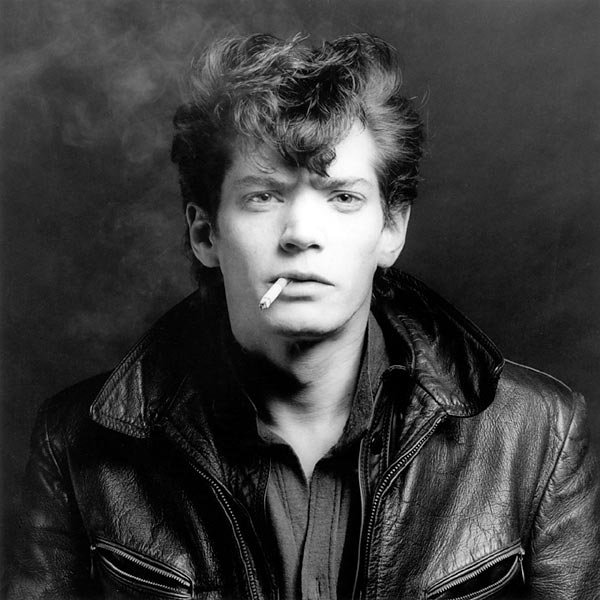Robert Mapplethorpe was born in New York in 1946 where his fame began. He began his studies at Pratt institute concentrating on graphic arts. His path as a graphic artist quickly came to an end as he dropped out of school without finishing his degree. After working as a fine artist for many years, his interests took a sudden turn as he developed an interest for photography. His unbelievable sense for photography seems as if it was a natural part of his everyday life. In the mid-1970s he was edged on by many to pursue photography. Robert began his career by taking numerous photos of his friends, acquaintances, and other artists. His aesthetic took a bit of a change in the 1980s as he began to focus his photography on statuesque male and female nudes, as well as portraits of other artists and celebrities. Taking on his proud sense of homosexuality he took many chances with his artwork. His photography yet classical and stylish, it portrayed explicit homoerotic themes which both led to his fame as well as general controversy at the time. Before he passed away in 1989 he helped found the Robert Mapplethorpe Foundation. The foundation to this day helps promote his work throughout the world, as well as donates millions of dollars in the fight against AIDS and HIV infection.
Mapplethorpe concentrated a lot of time on self-portraits to convey his messages to the public. The two photographs below are a strong example of his work. By placing the two self-portraits next to each other, the striking difference is exemplified to the viewer. At a sudden glimpse, the photographs clearly portray Robert. When paying closer attention to the detail in the pictures, there is more to them than just a common self-image. The photograph on the left portrays Robert, as the common person would call “masculine and tough.” The leather jacket, messy hair, the cigarette, and the powerful gaze give the photograph a common assumption of masculinity. In contrast, the photograph on the right has a subtle and soft appeal and generally seen as “feminine.” His hair is softly curled, eyes wide open with mascara, and the tops half of his body is bare.
 Through the two self-portraits Robert allows the viewer to see how subtle differences can portray a completely different image to the viewer. The two portraits are exceptionally prominent. The direct eye contact is used to connect on an even tighter note with the viewer, and make us believe we know more about Robert than we actually do. The use of black and white creates a magnificent contrast between the lights and dark tints. The contrast depicts the images on a superior level while avoiding all the distractions color would bring. The background of the photographs is bare. Such a choice of background shows that Mapplethorpe wanted to mainly focus on the subject, in this case he is his own subject. The lighting in the left photo is dominating, giving it a striking look. The choice on the right is subtle lighting, making the photograph look soft and less defined.
Through the two self-portraits Robert allows the viewer to see how subtle differences can portray a completely different image to the viewer. The two portraits are exceptionally prominent. The direct eye contact is used to connect on an even tighter note with the viewer, and make us believe we know more about Robert than we actually do. The use of black and white creates a magnificent contrast between the lights and dark tints. The contrast depicts the images on a superior level while avoiding all the distractions color would bring. The background of the photographs is bare. Such a choice of background shows that Mapplethorpe wanted to mainly focus on the subject, in this case he is his own subject. The lighting in the left photo is dominating, giving it a striking look. The choice on the right is subtle lighting, making the photograph look soft and less defined.In my opinion, though these two contrasting pieces Mapplethorpe strives to portray how just subtle differences in a masculine look can strive the people’s common assumption of feminine look or homosexuality in a man. I believe though these two photographs Robert wants to prove that just through minor changes people can perceive him as, either the “tough guy” on the left to the “soft feminine guy” on the right in just a matter of seconds. His example shows how people can be quick to judge and treat another just by their outer appearance. Paying close attention to detail, I believe Robert knew that the contrasting images would leave the impact he wanted to achieve. As an artist myself, the portrayal of the outgoing message in my artwork tends to become difficult. A photograph is such a simple idea, yet not many can achieve what they want through a simple photograph as well as Robert Mapplethorpe did though out his life. To this day Mapplethorpe remains a very important part of the world of contemporary photography.
Mapplethorpe's work...



Great choice. I love reading your work! GRADE 20/20
ReplyDelete